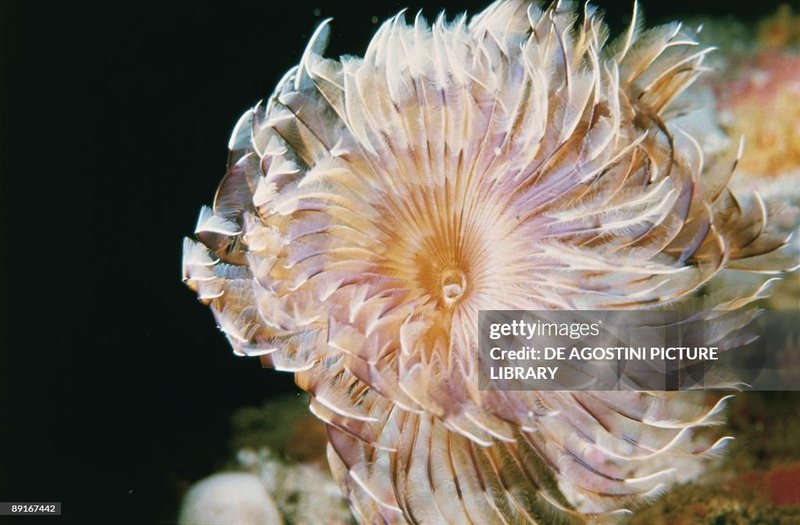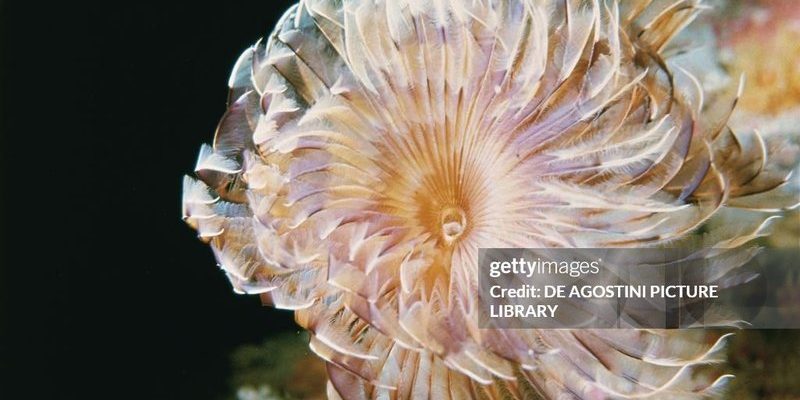
Identifying a Sabellid fan worm can feel a bit like joining a secret club of wildlife enthusiasts. It’s exciting to unlock the skills to see these mesmerizing creatures among the rocks and corals. So, let’s dive into the world of Sabellid fan worms. We’ll explore what they are, where you might find them, and how to tell them apart from similar creatures. Grab your snorkel gear, and let’s get started!
What Are Sabellid Fan Worms?
Sabellid fan worms belong to the family Sabellidae, a group of segmented worms known as polychaetes. These worms are characterized by their beautiful, feathery crowns which they extend into the water to catch plankton and nutrients. It’s a bit like having a buffet right in their living room! They attach themselves to hard surfaces, such as rocks or coral beds, using a sturdy tube made of sand or mud.
You might be wondering what makes these worms special. Unlike many marine creatures that can move freely, Sabellid fan worms are mostly sedentary. They rely on their stunning crowns to filter food from the water. Think about it: instead of swimming or darting around, they’ve adapted to thrive by staying put and letting the ocean provide for them.
They can vary in size from a few inches to over a foot long, depending on the species. Their colors can range from soft whites and browns to vibrant hues of pink or orange, which helps them blend in, providing a little bit of camouflage from predators.
Where to Find Sabellid Fan Worms
Finding Sabellid fan worms in their natural habitat can be a bit of an adventure. These worms thrive in various environments, from rocky shorelines to the depths of coral reefs. They prefer shallow waters, typically in areas where there are plenty of hard surfaces to attach their tubes.
To spot them, look for their unique crown peeking out of a tube. The best places are often tidal pools or along the edges of reefs. If you’re going snorkeling or diving, keep an eye out for spots with lots of coral or rocky structures.
Here’s a handy list of places where you might find them:
- Coral reefs
- Rocky shorelines
- Tidal pools
- Sand or mud substrates
Being patient is key. Sometimes, all it takes is a little time and observation. Glide slowly through the water, and you might be surprised at the wildlife that reveals itself!
How to Identify Sabellid Fan Worms
Identifying a Sabellid fan worm requires keen observation and a little bit of knowledge about their features. First, focus on the crown—it’s usually a fan shape and can come in a variety of colors. They often have distinct bristles that shimmer in the water, which helps with identification.
Take a look at their tube, too. Sabellid fan worms build protective tubes from bits of sand, shells, and mud. This construction can vary; some tubes look like smooth cylinders, while others may appear rough or textured. The material the tubes are made from can give you clues about the habitat where they live.
Here’s a simple checklist to help you identify them:
- Look for a feather-like crown: usually vibrant and fanned out.
- Check the tube: it should be made from sand or mud, often with a rough texture.
- Observe their habitat: they prefer shallow waters with plenty of hard surfaces.
With practice, you’ll become more skilled at spotting these stunning creatures!
Similar Species to Watch For
While you’re out searching for Sabellid fan worms, you might encounter other creatures that look similar. A few of these lookalikes include serpulid worms and brittle stars.
Serpulid worms have a similar feathery crown and build their tubes, but their tubes are often more spiraled and less varied in texture compared to Sabellid fan worms. Meanwhile, brittle stars can be mistaken for worms due to their long, slender arms, but they move around, while the worms remain motionless.
Understanding the differences can help you appreciate the diversity in the ocean. When you spot a creature, take your time to observe its behaviors and surroundings.
Here’s a quick comparison:
| Feature | Sabellid Fan Worm | Serpulid Worm | Brittle Star |
|---|---|---|---|
| Crown Shape | Feathery | Feathery, but more tubular | No crown, long arms |
| Tube Structure | Rough, made from sand/mud | Spiral, usually smooth | No tube |
| Movement | Stationary | Stationary | Active movement |
Why Identifying Sabellid Fan Worms Matters
You might be wondering why it’s important to identify Sabellid fan worms. These creatures play a crucial role in their ecosystems. By filtering water, they help maintain the health of marine environments. Plus, they’re an integral part of the food web—serving as a meal for various fish and marine animals.
Understanding marine life also helps us appreciate the complexities of ocean ecosystems. The more we know, the better we can protect them. When you spot a Sabellid fan worm, you’re witnessing the interconnectedness of life beneath the waves.
Tips for Observing Sabellid Fan Worms
If you’re eager to observe Sabellid fan worms in their natural habitat, here are a few helpful tips to keep in mind:
1. Be Respectful: Always practice responsible wildlife observation. Avoid disturbing their habitat or touching the worms.
2. Use the Right Gear: Snorkeling or diving gear will allow you to get close without causing disturbances. A camera can also help capture their beauty without getting too close.
3. Go at the Right Time: Early mornings or late afternoons often present calmer water conditions, making observation easier.
By following these tips, you’ll enhance your chances of spotting these unique creatures without disrupting their lives.
Identifying a Sabellid fan worm can be a delightful addition to your marine adventures. By knowing what to look for and where to find them, you can deepen your connection with underwater ecosystems. Remember, it’s all about being patient and observant.
Next time you’re near a coral reef or tidal pool, take a moment to search for these charming fan worms. With a little practice, you’ll find that you can spot them with ease, adding yet another layer to your appreciation of the ocean’s wonders. Happy exploring!

